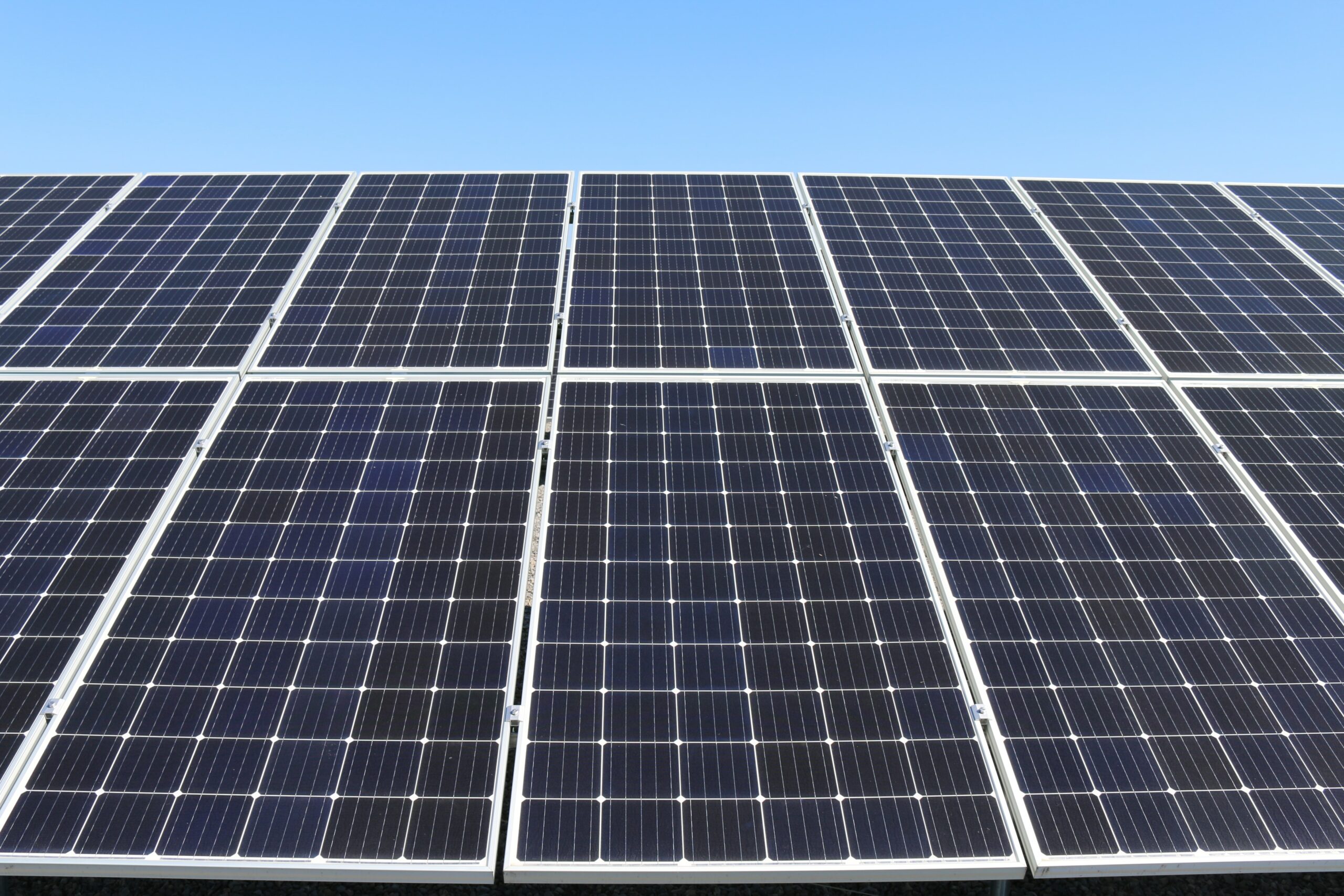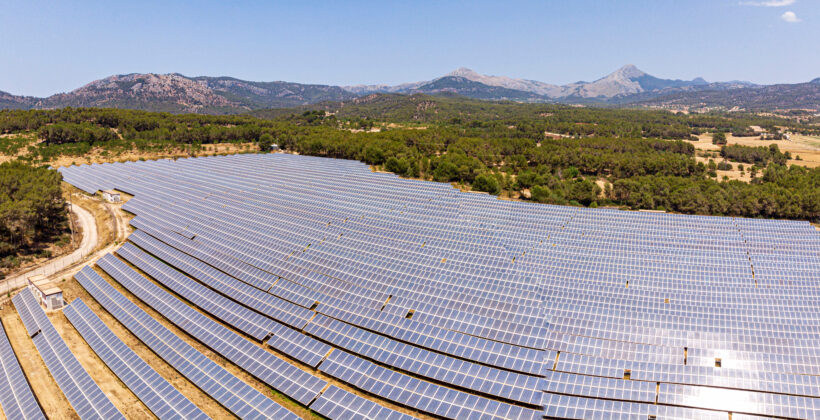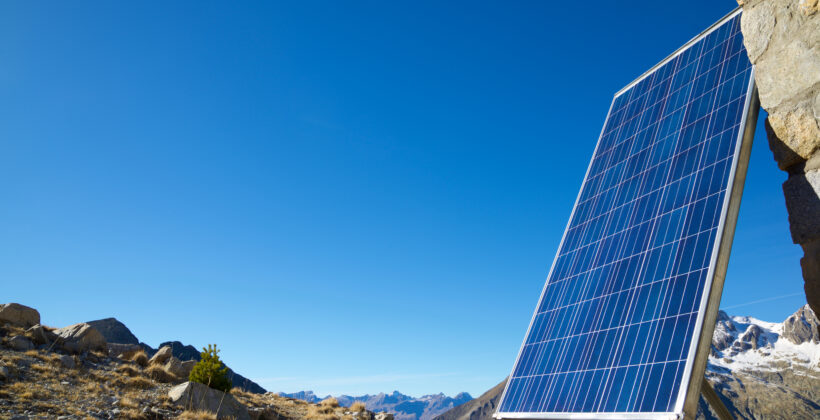
Under a brutal August sun, which saw the mercury rise to record-breaking levels throughout the Northern Hemisphere, the western region of Extremadura in Spain became home to the largest solar farm in Europe. Comprising one and a half million solar panels, the Franciso Pizaro solar farm will produce enough energy to power over 334,000 homes and prevent 150,000 tonnes of carbon entering the atmosphere every year.
The Franciso Pizaro solar farm’s status as the biggest solar farm in Europe is likely to be short-lived, but the next project that takes the throne is destined to be a fellow compatriot. Solar energy in Spain is set to rapidly surge in the next eight years, demonstrating the effectiveness of national leadership combined with local flexibility and cooperative business models. The result is a country making headway towards its target of generating 74 percent of its electricity from renewable sources by 2030 and 100 % by 2050, revealingly in contrast to the UK where, during an energy crisis, the refusal of permission for solar farms reportedly added £100 million to energy bills.
In 2020, solar capacity in Spain sat at 13.2 gigawatts (GW). By 2030, under current policy and investment plans, that capacity is set to exceed 72 GW – a more than five-fold increase in a decade. And it is not just utility-scale solar that is grabbing the headlines – rooftop solar is also popping up throughout Spain. In 2021, rooftop solar on private properties increased by 102 percent compared to the previous year, as domestic self-consumption grew from 19% in 2020 to 32 percent of the total in 2021.

Spain’s heritage of cooperative business structures is also helping to unleash the power of the sun. Cooperatives in Spain date back to the mediaeval guilds but became more widespread during the 19th century through the farming cooperative movement. Thanks to a variety of policy changes at a national level and the legislative flexibility afforded to devolved local authorities, solar energy cooperatives have blossomed throughout Spain as high energy prices dramatically reduce the payback time of installing solar systems and local communities push ahead with becoming energy self-sufficient.
The acceleration of solar generation capacity in Spain could not come any sooner. Chaos and volatility across international fossil fuel markets, and Russia’s weaponisation of fossil fuel exports, have made many energy importing nations acutely vulnerable to price fluctuations, while driving inflation ever-higher and pushing millions into destitution. Pressures are being felt at every level of society, and there are real concerns that tensions could reach a breaking point.
As a net-importer of energy, Spain has been particularly impacted by surging fossil fuel prices across oil, coal, and gas markets. In 2020, around 68% of Spain’s total energy needs were met by energy imports. While Spain’s energy system is less intertwined with Russian gas compared to its European partners, Germany and Italy, Russian LNG still accounted for nearly 12% of Spanish gas imports in May 2022. Achieving energy independence is a major driver for renewable generation in Spain, and its sun and wind are its greatest untapped resources.
The global surge in solar power, from Spain to Namibia, has been made possible by the dramatic fall in costs over the last decade. From 2009 to 2019, the price of electricity from solar generation declined by 89%. The sharp fall in the cost of solar generation, which means it now produces the cheapest electricity ever, was the result of a virtuous cycle. With greater levels of deployment, prices fall as manufacturers benefit from economies of scale, which then entices new manufacturers to enter the space, further driving down costs and improving technology. This process of learning and improving means that the more solar humanity builds, the cheaper the energy generated will become.
Even before fossil fuel price spikes sent inflationary shockwaves through the global economy, and supply chain issues pushed up manufacturing costs, global solar capacity continued to go from strength to strength. In 2021, solar capacity grew by 17%, with solar photovoltaic (PV) alone accounting for 60% of all new renewable capacity added in the same year. This rate of deployment is approximately double the rate over the previous five years. This year, in 2022, global solar is expected to reach new heights once again with more than 200GW of capacity added.
Given that sky-high fossil fuel prices are here to stay, and the revived political urgency of bolstering domestic energy generation, solar generation will surge in the coming years – especially in Europe. The region alone represented 33% of the global growth in capacity in 2021 and, with 25 out of 27 EU member states set to install more solar in 2022 than 2021, these numbers are only going one way.
Spain has been able to harness these global forces to ensure it becomes a continental leader in solar energy. Spain’s climate, landscape and the concentration of its population around the country all make solar the natural choice for adding clean generation capacity quickly. As the sunniest country in Europe, Spain experiences around 300 days of sunshine each year. This equates to over 3,000 hours of potential generation, whereas countries like Germany only enjoyed 1,896 hours of sunshine in 2020. Large parts of Spain are arid and undeveloped, making them opportune locations for utility-scale solar projects. It was recently suggested that the region of Aragón, one of the least populated areas of Spain, could become the ‘Saudi Arabia of solar power in Europe’.
While Spain seems perfectly suited for a solar revolution, policy – both at the national and local level – has played a vital part. At the national level, the Climate Change and Energy Transition Bill rightly centres the climate crisis within the Spanish economy and wider society. In 2018, the government abolished the so-called “sunshine tax” (impuesto al sol) where self-generating consumers were obliged to give their surplus energy back to the grid free of charge while paying a toll to cover the costs of distribution and maintenance. To bolster the solar sector further, the Spanish government overhauled the regulatory regime in 2020 by introducing a ‘pay-per-bid’ mechanism that applies to new renewable projects and the refinancing of existing facilities alike.
Under this mechanism, renewable energy generators bid a specific ‘strike price’ for a project. The financial support from the government will then be the strike price adjusted for the difference between the strike price and the market price, multiplied by an adjustment factor. In Spain, the adjustment factor relates to its ability to be dispatched, giving solar (and onshore wind) projects a distinct advantage. The first auction under the new regulatory regime took place in January 2021 and saw the Spanish government tender approximately 2 GW of solar PV capacity at an average price of €24.50 per MWh. In August 2022, Europe’s benchmark power price for fossil gas surged to €530.50 per MWh.
Another policy which has also helped scale up solar capacity throughout Spain is the creation of power purchase agreements (PPAs). These are long-term contracts between renewable generators and large companies or wholesalers that allow organisations that use vast amounts of energy to secure supply at an agreed price from a specific source. In 2021, approximately 23.7 GW of renewable energy contracts were signed by more than 130 companies using PPAs. Given the current turmoil on international commodity markets, locking in a supply of energy at a set price is an extremely attractive prospect.
In 2019 alone, Spain signed around 4.4 GW of solar PPAs, making it the largest European PPA market for solar. Spanish renewables giant, Iberdrola, is a pioneer of PPAs and recently penned a deal with Bayer to provide 100 percent renewable energy for ten years – some of which will be coming from the Francisco Pizarro solar plant. The Spanish solar market is particularly well-suited to these types of deals due to the low levelised cost of electricity, market price parity between different sources of electricity, and the availability of land for bringing forward these projects.

But it’s not all just utility-scale solar in Spain – self-generation and consumption through rooftop solar and energy cooperatives are also booming. At current wholesale energy prices, a solar home system in Spain could save between 40 and 60% on annual bills. Of course, there are significant cost barriers to installing such a system – but the government is using its weight to help overcome these. For instance, last year the Spanish government approved a package of €1.32bn in subsidies for self-consumption installations, behind-the-metre storage and air conditioning with renewable energies.
These measures were introduced on top of existing fiscal aids, including the personal income deduction when installing solar, and have stimulated a huge shift towards self-generation. Rooftop solar capacity on private properties increased by 102% in 2021 compared to the previous year. Domestic self-consumption increased from 19% in 2020 to 32% of the total in 2021. Again, these figures are set to go higher by the end of 2022.
Energy cooperatives are also doing their bit to help communities overcome the initial outlay. In Zaragoza, the capital city of the region of Aragon, the Ecodes cooperative has teamed up with the power firm EDP and the local government to launch a Solar Neighbourhood project (barrio solar). EDP has installed solar panels on municipal buildings throughout the city that generate electricity for hundreds of homes. The members of the scheme do not have to cough up the initial investment for the installation, but pay a monthly quota of €6.90 to repay it over a period of years while enjoying electricity prices that are roughly 30% cheaper than the market rate. To help the most vulnerable, the municipality has chosen families that will benefit from totally free energy.
1. Sweating their natural assets and organisational legacies
Spain’s landscape and climate make it the perfect place to become an international solar power hub. While the undeveloped expanses of the plains provide ample opportunities for utility solar projects financed through PPAs, the rise in rooftop generation points towards a future energy mix that boasts both scale and decentralisation.
The long and fruitful legacy of cooperatives in Spain has laid the foundations for solar energy coops and neighbourhood initiatives whose benefits are found in the solidarity they foster. Co-ownership of clean energy, where the benefits are felt financially and socially, can stimulate broader transitions and cultivate support for broader transitions and bolder climate policy.
2. National leadership combined with local flexibility
As is always the case, government policy has played a vital role in enabling solar to surge in Spain. The government’s hands-on approach to undoing previous policy mishaps and market failures, such as the sunshine tax, while playing a critical role in altering the market structure and bid mechanisms, has created the conditions for solar to shine. Whether it’s the price parity that makes huge solar farms a viable infrastructure investment, or local authorities being given the autonomy to determine energy policy to meet the needs of the communities they serve, policy has played a starring role.
The high degree of devolution throughout Spain’s 17 autonomous regional governments has been particularly productive for solar generation as these local authorities have sought to combine matters of energy generation with issues such as poverty alleviation, social investment, and wealth redistribution – some of the main tenets of the climate justice agenda. The onus of local democracy and autonomy has bled into energy cooperatives all around Spain, which are often managed democratically by their members and collaborate with other energy cooperatives in different regions over issues such as transmission. The local autonomy in Spain means that social and environmental objectives are brought to the fore of the energy transition, which is something large utility firms or central governments are often less interested in.
3. External shocks force an energy re-think
Without a doubt, the global shock of Russia’s ongoing invasion of Ukraine and its dramatic effect on fossil fuel prices driven by market speculators has caused many nations to re-think their energy policies. In Spain, which has very limited domestic fossil fuel resources, this meant a huge push towards its most prolific sources of energy: the sun and the wind.
At the EU-level, Spain has been pushing hard for structural changes to the continental energy market to ease the strain on citizens’ bills, including a windfall tax on fossil fuel firms and a decoupling of wholesale energy prices from gas so that countries can benefit more from cheap renewables.